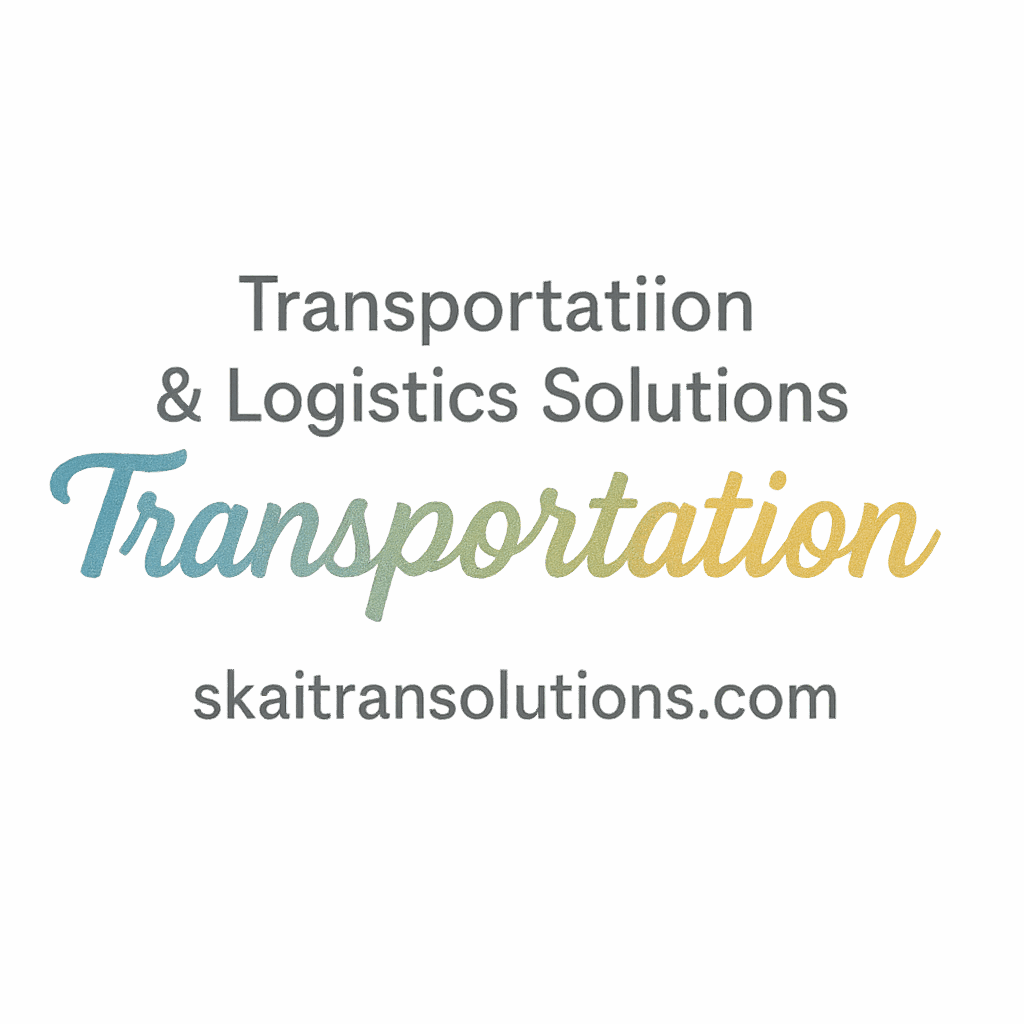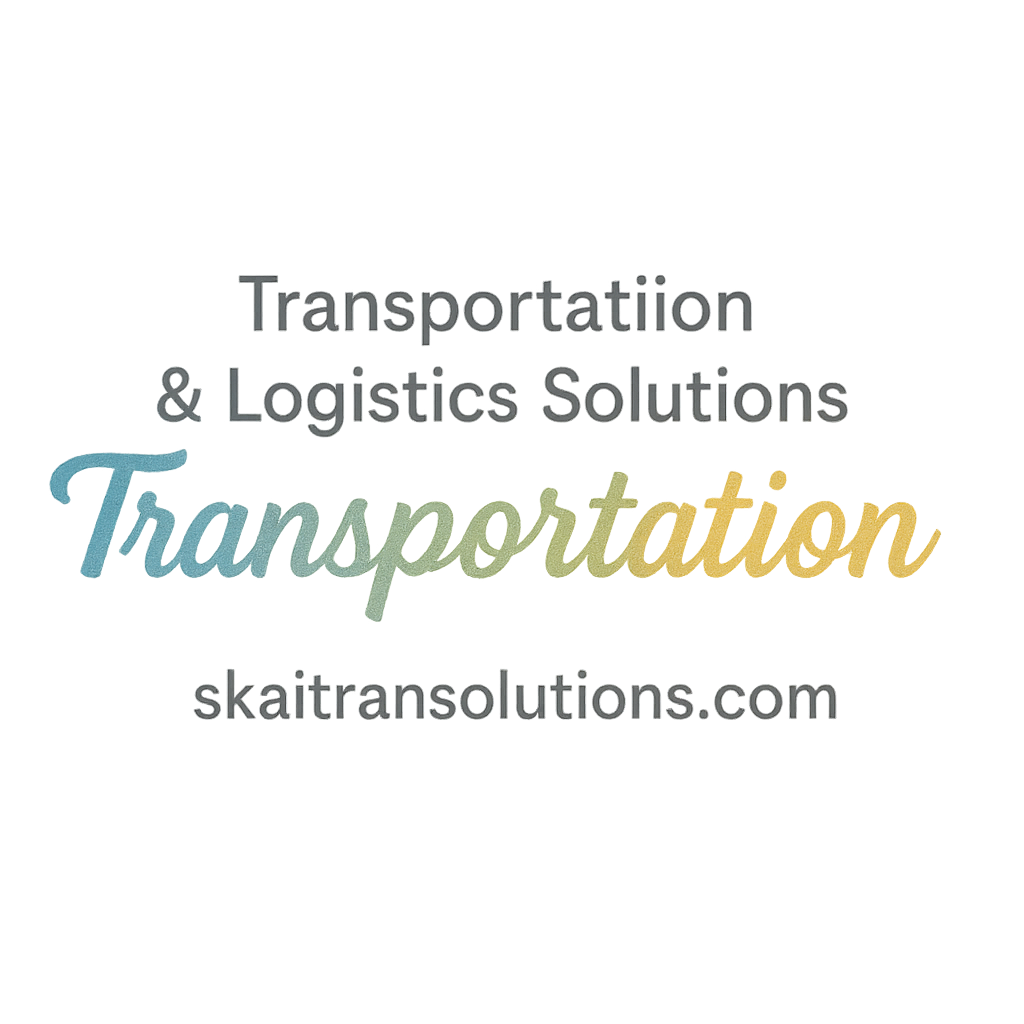Introduction: The New Age of Logistics
We’re living in a golden age for logistics and transportation—where Artificial Intelligence (AI) is rewriting the rulebook. AI isn’t just a tech buzzword anymore; it’s becoming the cornerstone of smarter, faster, and more resilient supply chains.
From AI-powered trucks cruising down highways to algorithms that forecast inventory needs better than any human planner, the shift is not just happening—it’s accelerating. If you’re in the logistics space or just fascinated by tech in motion, buckle up. This is where the future meets the road.
Why AI is a Game-Changer in Transportation
AI is transforming the way the transportation industry operates. Why? Because it offers something invaluable: intelligent decision-making based on vast amounts of data. When every mile, minute, and mistake costs money, AI helps companies work smarter—not harder.
The Role of Big Data in AI-Powered Logistics
Logistics operations produce mountains of data daily—vehicle locations, delivery times, fuel consumption, customer feedback, and more. AI systems eat this data for breakfast, processing it to uncover patterns and make actionable decisions in real-time.
Improving Efficiency with AI Algorithms
Forget the days of guesswork. AI algorithms can optimize routes, predict delays, schedule maintenance, and even manage staff more effectively. This optimization drives down costs, boosts customer satisfaction, and improves operational best practices.
1. Predictive Analytics for Supply Chain Optimization
Predictive analytics is like giving your logistics team a crystal ball. AI uses historical data and real-time inputs to foresee disruptions and proactively adjust plans.
How Predictive Models Enhance Supply Planning
These models can alert you to supplier delays, seasonal demand spikes, or transportation bottlenecks before they happen—giving you time to respond.
Real-Time Forecasting for Logistics Companies
AI forecasting tools also enhance your supply chain strategy by accurately predicting customer demand and adjusting orders. Less waste, more profit.
2. Autonomous Delivery Vehicles
AI has put the “auto” in autonomous, and the results are impressive.
From Self-Driving Trucks to Delivery Drones
Companies are piloting everything from AI-driven long-haul trucks to last-mile drones. These vehicles navigate traffic, avoid obstacles, and deliver goods with minimal human input—all thanks to powerful AI systems.
Internal Link to Autonomous Vehicle Technology
Explore more in our Autonomous Vehicles section to see the latest breakthroughs.
3. AI-Powered Route Optimization
Route optimization is a classic logistics challenge, and AI is crushing it.
Reducing Fuel Costs and Delivery Time
Using real-time traffic, weather, and delivery data, AI helps drivers avoid delays and optimize fuel consumption, which supports your cost reduction efforts.
Internal Link to Transportation Technology Innovation
Want to stay ahead of the curve? Check out Transportation Technology Innovations.
4. Smart Inventory Management Systems
AI has revolutionized warehouse management too—making overstocking and stockouts a thing of the past.
Preventing Overstock and Stockouts with AI
Using AI, businesses can analyze demand patterns, sales cycles, and even market trends to keep inventory levels just right.
Tying into Supply Chain KPIs and Metrics
Track performance using essential KPIs and metrics that keep your supply chain lean and mean.

5. AI-Enhanced Fleet Management
Fleet managers now rely on AI to monitor everything from vehicle health to driver behavior.
Monitoring Vehicle Health & Driver Behavior
AI systems can detect when a truck needs maintenance before it breaks down and even analyze how safely a driver is operating.
Link to Safety Inspections and Compliance Tags
Visit our tags on safety inspections and compliance to discover more fleet safety tools.
6. Chatbots and Virtual Assistants in Logistics
AI-driven chatbots are revolutionizing customer service in logistics. They respond to inquiries instantly, track shipments, and offer support 24/7.
Enhancing Customer Experience & Support
These bots don’t just answer FAQs—they actually learn from interactions to become smarter over time.
Customer Experience and Operational Best Practices
Learn how to elevate your service at our Customer Experience & Safety hub.
7. AI in Risk Management and Insurance
One of AI’s most unsung roles is how it’s transforming risk management.
Identifying and Preventing Claims Fraud
Machine learning models can detect anomalies in insurance claims, helping reduce fraud and streamline the claims process.
Connecting to Insurance and Strategy Tags
Find out how AI supports your insurance needs and strategy goals.
8. Real-Time Tracking and Visibility
AI enhances shipment tracking by integrating data from GPS, IoT sensors, and cloud platforms into a single dashboard.
AI-Powered IoT Sensors and Cloud-Based Dashboards
This gives stakeholders full visibility—whether they’re at HQ or halfway across the globe.
Link to Coverage, Performance, and Cost Reduction Tags
Optimize your delivery coverage, boost performance, and cut costs with AI-powered visibility.
Challenges of AI Implementation in Transportation
It’s not all sunshine and smooth roads. AI adoption comes with its own speed bumps.
Costs, Training & Technology Adoption Barriers
From upfront investment and technical training to employee resistance, deploying AI in logistics isn’t plug-and-play. But for those who invest wisely, the ROI is real.
The Future of AI in Logistics
The road ahead is promising—and autonomous.
Innovation, Trends, and Long-Term Vision
Whether it’s through deep learning, quantum logistics, or robotics, AI will continue to shape the future of logistics and transportation. Staying ahead means embracing innovation now—not later.
Conclusion
There you have it—eight powerful ways AI is flipping the logistics and transportation world on its head. From self-driving trucks to intelligent forecasting, AI isn’t just a tool; it’s becoming the backbone of modern logistics operations. Companies that adopt AI early will gain a competitive edge, while the rest risk falling behind. So what’s stopping you from taking the driver’s seat?
Explore more logistics and AI strategies at SkaiTran Solutions, your hub for innovative transformation.
FAQs
1. What are the biggest benefits of AI in logistics?
AI improves route planning, inventory management, customer service, and safety—leading to cost savings and better decision-making.
2. How do autonomous vehicles work in logistics?
They use AI, sensors, GPS, and cameras to navigate roads, avoid obstacles, and deliver goods safely without human drivers.
3. Can small logistics companies afford AI solutions?
Yes! Scalable AI tools like chatbots or fleet tracking systems are available as SaaS options that work for companies of all sizes.
4. What is AI route optimization?
It’s the use of AI algorithms to find the most efficient delivery routes by analyzing traffic, weather, and delivery windows.
5. How does AI help with supply chain risk management?
AI forecasts disruptions, identifies fraud, and supports contingency planning by analyzing real-time and historical data.
6. Are AI systems hard to integrate into existing logistics setups?
While integration requires some effort, many platforms now offer APIs and plug-and-play solutions designed for quick deployment.
7. Where can I learn more about logistics innovation?
Visit SkaiTran Solutions’ Transportation Insights and Innovation Tag to dive deeper.


